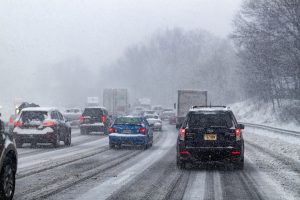From 1st October 2023, new fire safety legislation comes into effect which will impose new duties on businesses and buildings owners. The changes in legislation, from Section 156 of the Building Safety Act 2022, are in addition to the Fire Safety (England) Regulations 2022 and the Fire Safety Act 2021 which commenced last summer.
The Regulatory Reform (Fire Safety) Order 2005 is the primary fire safety legislation in England and Wales, and it applies to all non-domestic premises as well as the communal parts of residential buildings. Changes to this legislation have been introduced through the Building Safety Act 2022 and represent the next phase of the Government’s fire safety reform programme.
Legal Responsibilities for Responsible Persons (RPs)
The Building Safety Bill received Royal Assent in April 2022 and became the Building Safety Act 2022. This new legislation has the effect of amending the Fire Safety Order to:
- require that all RPs must record their completed fire risk assessment in full (whereas previously only specific information needed to be recorded)
- require that all RPs must record the identity of any individual and/or organisation engaged by them to undertake or review any or all of the fire risk assessment
- require that all RPs must record their fire safety arrangements (demonstrate how fire safety is managed in the premises)
- require that all RPs must record (and update as necessary) their contact information, including a UK based address, and share this with other RPs and residents of multi-occupied residential premises where applicable
- require that all RPs must take reasonably practicable steps to ascertain the existence of other Responsible Persons who share or have duties in respect of the same premises, and of Accountable Persons (which are a new legal entity made under the Building Safety Act in the case of higher-risk residential buildings) in relation to the premises – they must then identify themselves to said persons
- require that departing RPs must share all ‘relevant fire safety information’ with incoming Responsible Persons
- require RPs of a building containing two or more sets of domestic premises to provide residents with relevant fire safety information in a format that is easily understood by the residents
- increase the level of fines for some offences
- strengthen the status of statutory guidance issued under Article 50 of the Fire Safety Order
There is also a legislative requirement that, where the Responsible Person appoints a person to make or review the fire risk assessment, they must be competent. This legislative requirement will be brought into force at a later date, and we will provide relevant guidance in that regard ahead of the commencement date. In the meantime, if you do appoint a fire risk assessor our recommendation is that you ensure they are competent to do so, in terms of having sufficient training and experience or knowledge and other qualities. It remains the case that the Responsible Person has a duty to make sure that a suitable and sufficient fire risk assessment is completed.
The National Fire Chiefs Council has produced a video overview of these changes.
Main changes
The main changes introduced by the legislation are:
Written fire risk assessment and fire safety arrangements
The previous requirement to have a written fire risk assessment only applied in certain circumstances (such as where the responsible person employs five or more persons). This will no longer be the case and if you are a responsible person then you will need to record both your fire risk assessment and fire safety arrangement in full, regardless of the size or purpose of the business or premises.
To assist you Northamptonshire Fire & Rescue service have produced a template and guidance, which can be found on our Fire Risk Assessments page.
Enhanced requirements for cooperation and coordination.
In premises where there is more than one responsible person, for example in multi-occupied premises or buildings where the occupier and building owner are different entities, there are increased requirements for cooperation and coordination between responsible persons.
Provision of information to residents.
In residential buildings with two or more domestic premises (e.g. blocks of flats) then the responsible owner must provide residents with information on the risks from fire within their building and the fire safety measures provided to keep them safe. This requirement expands upon legislation introduced earlier this year that required responsible persons to provide residents with information on emergency procedures and the importance of fire doors.
For further information on all the changes and what you need to do to comply, the Government has published the following guidance:
Fire safety responsibilities under Section 156 of the Building Safety Act 2022
Section 156 – Frequently asked questions
What is Section 156 of the Building Safety Act 2022?
Section 156 is an amendment to existing fire safety legislation known as the Regulatory Reform (Fire Safety) Order 2005. These amendments are enacted under the Building Safety Act 2022.
These amendments form Phase 3 of the Home Office’s commitment to fire safety reform, building on Phase 1 and 2 (the Fire Safety Act 2021 and Fire Safety (England) Regulations 2022 respectively).
The amendments are designed to improve fire safety in all buildings regulated by the Regulatory Reform (Fire Safety) Order 2005.
What are the key changes that have been made to the Regulatory Reform (Fire Safety) Order 2005?
Several changes have been made to the existing Articles of the Regulatory Reform (Fire Safety) Order 2005. This includes:
- improving cooperation and coordination between Responsible Persons
- increasing and strengthening requirements in relation to recording and sharing of fire safety information
- improving access to information for residents about fire safety in their buildings
- making it easier for enforcing authorities to take action against non-compliance
A full list of duties for all responsible persons can be found on the Government’s website.
When will the new legislation come into force?
1st October 2023.
If I own a small shop with less than 5 employees do these amendments apply to me?
The legislation has been changed so that most of the new requirements under these amendments apply to all non-domestic premises including, but not limited to:
- Any place of work
- Places where people visit or stay
- Non-domestic parts of multi-occupied residential buildings such as communal corridors, stairways and plant rooms
The requirements do not apply within individual domestic premises that do not form part of a multi-occupied building.
In Northamptonshire the enforcing authority for these premises is predominantly Northamptonshire Fire and Rescue Service.
You may receive a visit from a Fire Safety Inspecting Officer who will request to see records to show that you are managing your fire safety effectively. You can find out more about this on our Fire Safety Audits page.
What guidance is available to help me to comply with the amendments enacted under Section 156?
The new legislation supports the status of what is known as ‘Article 50’ risk-based guidance. This means that the guidance has been agreed and approved to be used by the Secretary of State.
Under the new legislation this guidance can be used in court proceedings to determine whether compliance has been achieved or whether a deviation from guidance has resulted in a breach of the Regulatory Reform (Fire Safety) Order 2005.
The Government provides a suite of guides bespoke to different types of premises and various levels of risk.
Can I still complete my own Fire Risk Assessment?
Where the responsible person appoints a person to make or review the fire risk assessment, they must be competent.
However, this legal requirement will be brought into force at a later date than those commencing from 1st October 2023.
Until this time it is recommended that you ensure that any person completing or reviewing a fire risk assessment has sufficient training, experience, knowledge and other qualities to do so.
The duty to make sure that a suitable and sufficient fire risk assessment is completed remains the duty of the RP.
Do these changes affect the legal penalty for committing an offence?
The penalty for any offence that is found to have been committed from 1st October 2023 under Article 32 of the Regulatory Reform (Fire Safety) Order 2005 has been increased.
This means that the maximum level of fine for offences has changed from Level 3 (£1,000) to Level 5 (Unlimited) fine as determined by HM Courts.
The increase in penalty will only be effective for offences committed after 1st October 2023. Any offence committed before this time will carry the former maximum penalty of a Level 3 (£1,000) fine per offence.
This change is to reflect the seriousness of fire safety offences in aligning them with all other offences; and to act as a deterrent.
Home Office guides
The Home Office has released three guides and updated the GOV.UK main landing page to reflect Building Safety Act 2022 Section 156 coming into force on 1 October.
To access the guides, click on the links below:










